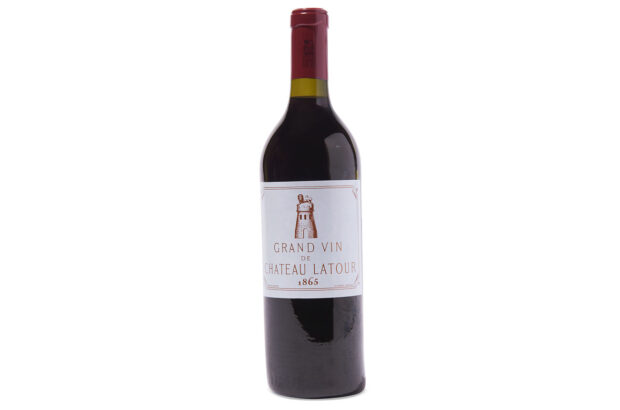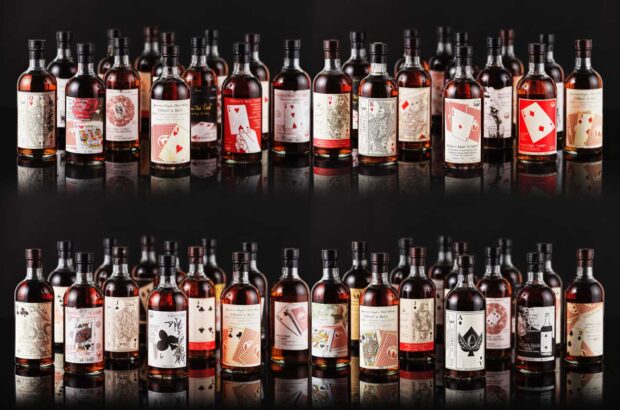With rice as its soul, sake offers endless possibilities for food pairing due to its gentle, delicate, and umami-rich nature, as well as the wide spectrum of styles. Here are our top tips for navigating the diverse expressions of sake for those beginning their journey with the category.
Choosing sake for food: The advantages
Compared to wine, which Decanter readers may be more familiar with, sake is naturally low in acidity and lacks tannins, but tends to have a slightly higher alcohol range.
Rice as its most crucial ingredient brings the beverage a mellow, umami-rich backdrop and usually, a touch of sweetness – which is the key to its potential to ‘blend in’ with a wide range of flavours. Meanwhile, sake can enhance the depth and richness of foods abundant in umami, such as mushrooms, tomatoes, cheese, soy sauce and miso, as well as cured meats.
‘Sake contains up to five times the level of umami found in wines,’ says Sarah Stewart – head of sake programming at West London Wine School – who is working with The Japan Food Product Overseas Promotion Centre (JFOODO) on its ‘Sake Seafood Sensations’ campaign this year.
‘It’s the only alcoholic beverage with naturally high levels of the fifth taste (in addition to sweet, sour, salty and bitter),’ says Stewart. ‘This sense of “savoury deliciousness” that coats the palate and synergises with umami-rich foods to create a truly moreish combination.’
Common sake styles and their typical flavours: A recap
Junmai 純米 – Literally means ‘purely rice’. Sake made without added alcohol, tends to exhibit a richer mouthfeel and more savoury and complex flavours. This term can be appended to premium categories Daiginjo and Ginjo.
Daiginjo 大吟醸 – Super premium sake with a 50% rice polishing ratio (broadly speaking, the lower the ratio, the purer flavours tend to be). Tends to showcase elegant fruits and floral perfume. If labelled without ‘Junmai’ that means it contains additional alcohol.
Ginjo 吟醸 – Premium sake with a 60% polishing ratio, tends to be fragrant with a slight hint of savoury complexity. Also contains additional alcohol if no mention of Junmai on the label.
Honjozo 本醸造 – Made using rice polished to 70% and a small amount of alcohol – tends to yield an easy-drinking, ‘ricey’ and less aromatic sake.
Futsushu 普通酒 – ‘Basic alcohol’. A wide range of flavours and styles can be found in this category.
Other styles:
Namazake (生酒) – Unpasteurised sake (need to be refrigerated), known for its fresh, zesty taste.
Nigori (濁り) – Unfiltered sake. Cloudy with creamy, rice-forward flavours.
Sparkling sake – Fizzy sake, typically vibrant and light, sometimes has a touch of sweetness.
Koshu (古酒) – Aged sake, often showcasing nutty, oxidative flavours, resembling sherry.
Kimoto (生酛) & Yamahai (山廃) – Produced with slower, traditional methods. Usually displays exceptional complexity, richness and earthiness, even some funky characters.
The ‘staple go-to’ choices
Even if you’ve completed the one-day WSET sake Level 1 course and learned the basic styles by heart, the sake list at a restaurant can still be difficult to decipher – even for those who speak Japanese.
What if you’re just mildly tempted to give the category a try? Are there any relatively ‘failure-proof’ choices for beginners?
‘Yes,’ is the short answer. Generally speaking, styles with a more mellow mouthfeel, umami-rich flavours and lower alcohol levels are more likely options as ‘all-rounder’ choices, said sake experts we interviewed.

Credit: LAW Ho Ming / Moment via Getty Images
Junmai
Junmai sake, made solely from rice, water, koji (a mould that helps convert starches in rice into sugars), and yeast, has ‘the highest potential for food pairing,’ says Vicky Vecchione, head of bars at Danish-Japanese restaurant group, Sticks’n’Sushi.
‘It is full-bodied, starchy, quite savoury, making it perfect to serve at any temperature. It also pairs well with a wide range of food, from Asian to Italian, from Mexican to Spanish food. Junmai sake is what you want to try to experience the umami character inherent in sake.’
The food-friendliness also applies to the premium end – such as Junmai Ginjo, which ‘combines gorgeous fruity-floral character alongside some grain-forward elements that provide an easy bridge for pairing,’ as Stewart puts it.
See also: Sake: A beginner’s guide & top recommendations
Honjozo
Honjozo, with the additional splash of alcohol for a crisp fragrance, can bring freshness to greasy, meaty dishes while enhancing the spiciness of strong-flavoured dishes such as curry – but chilling is a must.
It can be ‘a perfect accompaniment to barbecued food, meat stews, grilled fish and seafood in general,’ said Miho Komatsu, Akashi-Tai brand’s ambassador. She added that the Akashi Honjozo, when served chilled, is also a good companion to cheddar and comté cheeses.
Sparkling sake
Like sparkling wine, sparkling sake, made either by second fermentation in the bottle or carbonation – is easily pleasing as a food companion or aperitif.
‘We would suggest starting any meal off with sparkling Mio, aperitif style,’ says Vecchione about some of the favourite choices of her customers.
This particular sparkling sake features refreshing, delicate bubbles with a hint of sweetness, which ‘goes well with any sushi or light food bites,’ she says.
Sharing platters and richer-flavoured dishes
For sharing dishes enjoyed ‘Izakaya-style’, Vecchione recommends Hiya sake (冷や酒, chilled sake) and Genshu sake (原酒, undiluted sake) on the rocks.
The Genshu sakes, with their higher alcohol and more intense flavours, are an alternative answer to pairing strongly-flavoured dishes without being over-shadowed.
Komatsu recommends tuna tartare seasoned with chilli, ginger and sesame, calamari salad, sea bream or grilled white fish, and pork medallions with truffle to go with Akashi-Tai’s Junmai Daiginjo Genshu, which features a melony, steamed rice-flavoured palate and complex depth.
Likewise, the milky-textured Nigori sake calls for spicy food, such as Indian curry, Thai green curry or Korean spicy food, according to Vecchione.

Akashi-Tai Junmai Daiginjo Genshu. Credit: Akashi-Tai
Sake and wine: The style match by Sarah Stewart
‘Very broadly, premium sake with the words Ginjo (吟醸)/Junmai Ginjo (純米吟醸) or Daiginjo (大吟醸)/Junmai Daiginjo (純米大吟醸) on the label will have a more fruity/floral profile and are sure to appeal to crisp, fruity white wine drinkers.
‘Premium sakes labelled as Honjozo (本醸造) or just the word ‘Junmai (純米)’ will tend to have a more savoury, grain and lactic flavour profile that may appeal to lovers of earthy, savoury red wine styles; they can be enjoyed at a wide range of temperatures from lightly chilled to room temperature or warm and are a greater match with richer, heavier dishes or meats.’
Serving temperature
From Atsukan (熱燗, heated sake) to Hiya Zake (冷や酒, chilled sake), sake can be served in a much wider range of temperatures than wine.
Generally speaking, chilling brightens up the taste buds and brings out more delicate, fruity and floral notes, which is especially helpful when paired with greasy, heavy dishes, as sake is lower in acidity.
Heating, in turn, accentuates the umami richness and reveals deeper, more complex flavours (and enhances the sweetness), making it ideal for savoury meals.
‘Most Junmai and almost all savoury or rustic styles of sake (Honjozo or higher-acid Kimoto 生酛 and Yamahai 山廃) can be enjoyed at a full spectrum of temperatures,’ as Anna Lee Iijima explains in her How to taste sake guide.
‘Premium sake has a more delicate character and subtle aroma, so we suggest serving this chilled,’ Vecchione says.

Akashi-Tai Honjozo Tokubetsu. Credit: Akashi-Tai
Ordering food for sake: Try it out
‘I strongly encourage wine lovers to branch out and try pairing sake with whatever they are eating – I promise you’ll be very pleasantly surprised,’ says Stewart.
‘The only general “rule” I watch out for is trying to match intensity: pair the delicate, ethereal sake styles with lighter dishes to allow them both to shine, and heavier, more impactful sake styles with bigger more intense dishes so neither overpowers but instead they can amplify each other.’
The exploration can start from a sake tasting menu found in a restaurant – and these commonly-seen Japanese dishes are easily enjoyable with almost any sake you’d like to try out:
- Chicken/pork Gyoza: The creaminess of cooked cabbage goes nicely with the ‘ricey’ umami of sake
- Karaage chicken, squid or softshell crab: The crunchy, savoury coating works especially well with chilled sake
- Nabemono (Japanese hot pot): The seaweed-based Dashi broth pair matches the umami depth of sake
- Soya or miso-seasoned stewed fish or meat
- *Sushi: Given the delicate nature and the diversity of the category, it’s worth consulting the sommelier to find the best match for the specific sushi you have chosen to enhance the pairing experience.
Besides Japanese food, given its compatibility with cured meat, cheese, tomato and dried fish, sake can also make a ‘perfect combo’ with Italian, Spanish and French dishes, says Vecchione.
And why not try sake with dishes that are much more challenging to pair with wine? Says Stewart: ‘Certain ingredients, like eggs (due to the sulphur), artichokes, and bitter green vegetables, are difficult to pair with most wines, but sake generally works a treat. Styles with a green character (often made with the heirloom rice varietal Omachi) pair perfectly with vegetables like asparagus and bitter greens.’
Finally, it’s worth noting that although sake generally doesn’t ‘fight’ with food, finding the best match still requires gourmet knowledge of producers and regions, just like wine.
Production methods, rice strains used and the local ‘terroir’ (especially the water source) endorse nuanced differences in sake that are hard to generalise, says Stuart Hudson, head of sales and advocacy at Toku Saké.
The premium sake brand, for example, is produced using snow-melt water from Daisetsuzan mountain range, Asahikawa of Hokkaido, the northmost prefecture of Japan where temperatures regularly drop to -20°C in winter.
His top recommendations for the ethereal, mellow super premium Toku Junmai Daiginjo include garlic and mayonnaise-flavoured asparagus, or Italian Prosciutto and melon for the interplay of savoury and sweetness.







